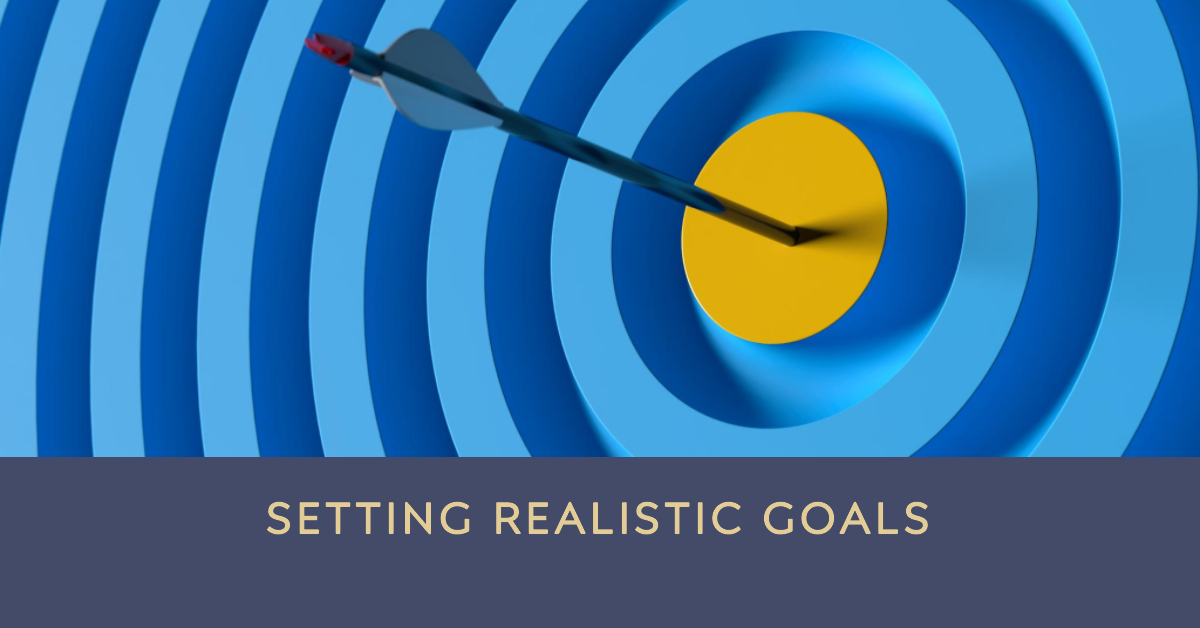Are you feeling stuck in your personal or professional life as a coach or coaching client? Do you find yourself struggling to achieve your goals, overcome obstacles, or effectively help your clients? It may be time to shift your mindset. Mindset shift is a powerful tool that can help you break free from limiting beliefs and unlock your full potential. And when it comes to coaching, mindset shift is essential for achieving meaningful progress and lasting change.
Coaching is all about helping others become the best version of themselves. Whether you’re working with a coach on a specific goal or you’re a coach yourself, mindset shift plays a crucial role in the process. By shifting your mindset, you can transform the way you think about yourself, others, and the world around you. You’ll gain clarity, confidence, and resilience – all of which are essential for achieving success and living a fulfilling life. So if you’re ready to take control of your life and unleash your true potential, read on to learn more about the role of mindset shift in coaching.
Table of Contents
Key Takeaways
- A mindset shift is essential for achieving meaningful progress and lasting change in coaching, enabling individuals to unlock unlimited possibilities for achievement and transforming the way they think about themselves, others, and the world around them.
- Coaching involves helping clients become the best version of themselves by setting realistic goals, creating action plans, and building strong relationships to measure success and create lasting impact.
- A growth mindset is crucial for helping clients reach their goals and achieve success, embracing challenges, persisting through obstacles, and viewing failure as an opportunity for learning, while a fixed mindset limits one’s ability to learn and grow, leading to fear of failure and limited potential for growth.
- Personal development involves challenging self-doubt and fear, developing emotional intelligence, celebrating successes, tracking goals, and reassessing the approach, while an action plan is important in achieving success by identifying specific actions, setting deadlines, assigning responsibility, and monitoring progress.
Understanding Mindset Shift
Let’s dive into understanding how a mindset shift can totally transform your coaching game! A mindset shift is a change in perspective or way of thinking that can lead to significant progress in all areas of your life, including helping your clients. When it comes to coaching, having a growth mindset is crucial if you want to help your clients reach their goals and achieve success.
With a growth mindset, both the coach and the client believe that abilities and skills can be developed through dedication and hard work. This means that challenges are seen as opportunities for growth instead of setbacks. As a coach, encouraging a growth mindset in your clients will allow them to expand their potential and overcome limitations they might have thought they had.
On the other hand, having a fixed mindset limits one’s ability to learn new things and grow. A fixed mindset is characterized by the belief that abilities are predetermined and cannot be changed. This type of mentality leads people to avoid challenges, fearing failure or embarrassment. As a coach with this kind of thinking, you may unintentionally limit your clients’ potential by reinforcing negative beliefs.
As a client, growth mindset can help you understand the personal transformation procedure better and give you a motivation boost. This, in turn, will make trusting in the process easier – all because you will understand that every skill or ability is trainable and that big changes happen in a step-by-step process.
Understanding the power of mindset shift can revolutionize your approach to coaching regardless of whether you’re a coach or a client seeking support. By adopting a growth-oriented perspective yourself and instilling it in others, you enable both yourself and those around you to unlock unlimited possibilities for achievement. With an open mind toward learning new things, embracing challenges as opportunities for personal development, and believing in one’s ability to improve – anything becomes possible!
Identifying Limiting Beliefs

When it comes to identifying limiting beliefs, one of the most important things you can do is recognize negative self-talk. This is the voice inside your head that tells you you’re not good enough or capable of achieving your goals. Another key point is learning how to challenge self-doubt and fear. By doing so, you can break free from the limitations imposed by these beliefs and achieve more than you ever thought possible. So don’t let negative thoughts hold you back – start recognizing them today and take steps to overcome them!
Recognizing Negative Self-Talk
You’ve got to stop that negative self-talk! It’s not just holding you back, it’s dragging you down into a pit of despair. When you constantly tell yourself that you’re not good enough or that you’ll never succeed, you create a self-fulfilling prophecy. Your thoughts become your reality, and if all you think about is failure, then failure is what you’ll get.
But it doesn’t have to be this way. You can choose to shift your mindset from one of negativity to one of positivity. Start by becoming aware of your negative self-talk. When those thoughts pop up in your mind, acknowledge them but don’t dwell on them. Instead, replace them with positive affirmations and focus on the things that are going well in your life. With practice and consistency, this new way of thinking will become second nature and lead to a happier and more fulfilling life.
Challenging Self-Doubt and Fear
Challenging self-doubt and fear involves taking control of your thoughts and replacing negative beliefs with positive ones, leading to a more confident and empowered version of yourself. It’s important to recognize that self-doubt and fear are natural emotions that everyone experiences, but it’s how we handle them that sets us apart. By challenging these negative thoughts, you are taking the first step toward achieving your goals and living a fulfilling life.
When faced with self-doubt or fear, start by questioning the validity of those thoughts. Are they based on facts or just assumptions? Reframe negative statements into positive affirmations and focus on your strengths instead of weaknesses. Remember that failure is not permanent and every setback is an opportunity for growth. With practice, challenging self-doubt and fear will become second nature, allowing you to live a more fulfilling life with confidence in yourself and your abilities.
Developing a Growth Mindset
Incorporating daily habits such as setting goals, seeking feedback from others, embracing challenges, and persisting through adversity can help cultivate a growth mindset. By focusing on effort rather than just natural ability or talent, individuals with this mentality are more likely to take risks and pursue their dreams despite fear or uncertainty.
The following table illustrates some key differences between a fixed versus growth mindset:
| Fixed Mindset | Growth Mindset |
|---|---|
| Avoids challenges | Embraces challenges |
| Gives up easily | Persists through obstacles |
| Sees failure as final | Views failure as an opportunity for learning |
| Feels threatened by the success of others | Learns from the success of others |
| Believes intelligence is static | Believes intelligence can be developed |
By adopting a growth mindset in coaching sessions or personal development endeavors, you will not only build resilience but also foster an environment of continuous learning where failures become stepping stones toward future successes. Remember that change starts with small steps toward positive transformation!
Setting Realistic Goals

When it comes to setting realistic goals, the first step is to define your objectives and priorities. Once you have a clear understanding of what you want to achieve, it’s time to create an action plan that will help you get there. By breaking down your goals into smaller, actionable steps, you can stay focused and motivated as you work toward achieving success. Remember, with the right mindset and approach, anything is possible!
Defining Objectives and Priorities
To define your objectives and priorities, start by taking a step back and looking at the bigger picture – like a painter stepping away from their canvas to assess the composition. It’s important to have clarity on what truly matters to you, what aligns with your values and beliefs, and what will bring you fulfillment in life. Once you have a clear understanding of these things, it becomes easier to prioritize where you should focus your time, energy, and resources.
Defining your objectives and priorities is not just about setting goals that sound good or impress others. It’s about creating a roadmap for yourself that will guide you toward living a purposeful life. By defining what truly matters to you and setting priorities accordingly, you gain more control over your life and can make decisions that are aligned with your vision for the future. Remember that it’s okay if your objectives and priorities change over time as you grow and evolve – the key is to regularly reassess them so that they continue to serve as helpful guideposts along your journey toward freedom.
Creating Action Plans
Now that you have defined your objectives and priorities, it’s time to create action plans that will help you achieve those goals. Creating an action plan involves breaking down the objectives into smaller, manageable steps. This will make the process less overwhelming and give you a clear path toward achieving your desired outcome.
To create an effective action plan, consider the following:
- Identify specific actions: What steps do you need to take to achieve your objective? Be specific about what needs to happen.
- Set deadlines: When do these actions need to be completed? Setting deadlines creates accountability and helps keep you on track.
- Assign responsibility: Who is responsible for each step of the plan? Knowing who is accountable for each task ensures that everyone is clear on their role.
- Monitor progress: Keep track of how far along in the process you are. This allows you to see if things are going according to plan or if adjustments need to be made.
- Celebrate successes: Remember to celebrate when milestones are reached! Recognizing accomplishments helps boost morale and keeps motivation high.
By creating actionable steps toward your goals, you’re taking control of your life and actively working toward achieving success. Remember that success doesn’t come overnight, but with persistence and dedication, anything is possible.
Practicing Self-Awareness

To truly excel in your coaching journey, it’s crucial to practice self-awareness. This means understanding your personal triggers and patterns, as well as developing emotional intelligence. By taking the time to reflect on your own emotions and behaviors, you can become a more effective coach who is better equipped to handle challenging situations with grace and empathy. So don’t overlook the importance of self-awareness – it could be the key to unlocking your full potential as a coach!
Understanding Personal Triggers and Patterns
Discovering your personal triggers and patterns is key to unlocking the power of mindset shift in coaching. Often, we are not aware of what triggers us or how our patterns affect our thoughts, emotions, and actions. By identifying these triggers and patterns, you can better understand yourself and how you respond to different situations. This self-awareness allows you to take control of your reactions and make intentional choices that align with your goals.
In coaching, understanding patterns and triggers is essential for creating lasting change. Your coach can guide you through this process by asking questions that help you uncover your underlying beliefs and assumptions. Once these are identified, you can work together to challenge them and replace them with more positive and empowering beliefs. With this shift in mindset comes a newfound freedom to approach challenges with confidence and resilience, leading to greater success both personally and professionally.
Developing Emotional Intelligence
Developing emotional intelligence is crucial for individuals to understand and manage their emotions effectively. As a coach, it’s important to help your clients recognize the importance of developing emotional intelligence so they can improve their relationships, communication skills, and overall wellbeing. Emotional intelligence involves being aware of your own emotions, recognizing them in others, regulating your emotions appropriately, and using that information to navigate social situations.
As a client, high emotional intelligence levels will help you open up before your coach, increase transparency, and foster trust. This is crucial if you want to develop a strong bond based on understanding and honesty. Being emotionally intelligent will also make it easier for you to apply your coach’s instructions and work toward personal empowerment as you will understand your own emotions better.
One of the ways to develop emotional intelligence is by practicing mindfulness. Mindfulness allows you to focus on the present moment and become more aware of your thoughts and feelings without reacting to them. Encourage your clients to take a few minutes each day to practice mindfulness through techniques such as deep breathing or meditation. Another helpful tool is creating an emotion chart where clients can write down their feelings throughout the day along with what triggered those emotions. This helps increase self-awareness and provides insight into patterns and triggers that may be causing negative emotions. By developing emotional intelligence, individuals are better equipped to handle challenges with confidence and resilience while also fostering more positive relationships with others.
| Benefits of Developing Emotional Intelligence | Examples |
|---|---|
| Improved self-awareness | Recognizing personal triggers |
| Better communication skills | Active listening |
| Increased empathy | Understanding others’ perspectives |
| More effective conflict resolution strategies | Collaborative problem solving |
| Enhanced decision-making abilities | Considering both logical reasoning and emotional intuition |
Measuring Success
Achieving success in coaching (for both the client and the coach) involves more than just reaching a certain number or metric; it’s about hitting the mark and surpassing expectations, like shooting an arrow straight to the bullseye. However, measuring success can be challenging. It’s not just about looking at the numbers but also evaluating how far you’ve come from where you started. You need to have clear goals, monitor progress regularly, and celebrate milestones along the way.
To measure your success as a coach, start by setting specific and measurable goals that align with your client’s needs and aspirations. Then develop a system for tracking progress toward these objectives. This could involve regular check-ins with your clients or using tools such as surveys or feedback forms to gather data on their progress.
It’s important to remember that measuring success is not just about achieving outcomes but also about building strong relationships with your clients. Your ability to connect with them on a personal level and inspire them toward positive change will ultimately determine your effectiveness as a coach.
To measure your success as a coaching client, begin by identifying well-defined, quantifiable targets that correspond to your personal ambitions and necessities. Then, generate a scheme to monitor your advances toward these milestones. This might require frequent self-assessments or utilizing resources like progress charts or reflection journals to collect information on your own development and growth. These practices will not only provide insight into the effectiveness of the coach’s methods but also help you understand your own capacities and areas of improvement.
Measuring success in coaching requires more than just looking at numbers or metrics. It involves developing clear goals, building strong relationships with your client or your coach, and inspiring them (or yourself) toward positive change. By taking these steps and continually reassessing your approach to the coaching process, you can help bring out the best in those you work with while creating a lasting impact in their lives.




